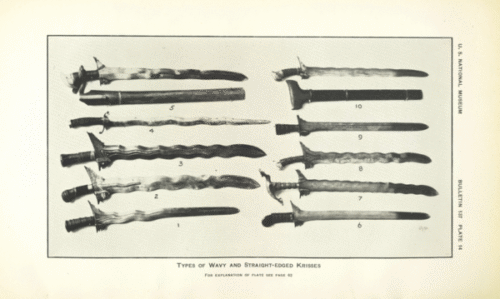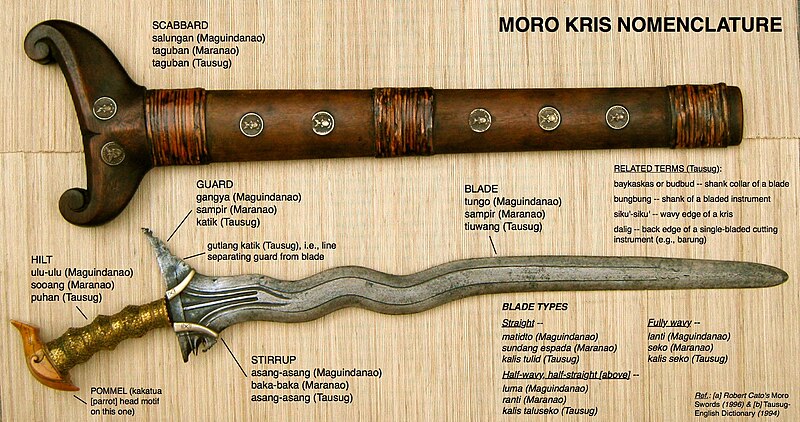The Sundang Sword – A Glimpse into Philippine Martial Heritage

The Sundang sword also known as Kalis, a traditional weapon of the Philippines, embodies the rich history and martial culture of the archipelago. Known for its distinctive design and versatility, the Sundang has been an integral part of Filipino heritage, reflecting both the craftsmanship of local artisans and the fighting spirit of the Filipino people. In this blog, we will explore the history, design, cultural significance, and modern relevance of the Sundang sword.
Historical Overview of Sundang
The Sundang sword has roots that trace back to pre-colonial Philippines. Used by various indigenous groups, particularly in the southern regions like Mindanao and the Sulu Archipelago, it served both practical and ceremonial purposes. The sword played a crucial role in the defense of communities and was often wielded by warriors and chieftains, including the Tausug and Maranao during conflicts with rival groups and colonial invaders.
Throughout history, the Sundang has also been associated with tribal identity. Different regions developed their unique styles and variations, reflecting the diverse cultural landscapes of the Philippines. Each Sundang tells a story, with its design and embellishments representing the values and beliefs of the community it came from.
Design and Features
The Sundang has a double-edged blade, which is commonly straight from the tip but wavy near the handle, typically ranging from 24 to 30 inches in length. Its distinctive shape allows for effective slicing and thrusting, making it a versatile weapon in hand-to-hand combat. The blade is often made from high-quality steel, forged by skilled artisans who have honed their craft over generations.
The hilt of the Sundang may be adorned with intricate carvings, often reflecting the cultural motifs of the region. Some variations feature a guard or distinctive pommel, enhancing both the aesthetics and functionality of the sword. The craftsmanship involved in creating a Sundang is a testament to the artistry and dedication of Filipino blacksmiths.

Source: from wikipedia – Author: Filhistorydotcom
Licensed under the Creative Commons Attribution-Share Alike 3.0 Unported license
Cultural Importance
The Sundang is more than just a weapon; it is a symbol of pride and identity for many Filipino communities. In traditional practices, the sword is often passed down through generations, serving as a familial heirloom. It is used in various ceremonies and rituals, highlighting its importance beyond the battlefield.
Martial arts forms such as Arnis and Eskrima, which emphasize the use of bladed weapons, have roots in the use of the Sundang. Practitioners of these arts often incorporate the sword into their training, keeping the techniques and traditions alive. The Sundang, therefore, represents not just a martial tool but a bridge connecting past and present.
Modern-Day Relevance
In contemporary times, the Sundang sword is experiencing a revival, both in martial arts circles and among collectors of traditional weapons. With a growing interest in indigenous Filipino culture and heritage, many practitioners are rediscovering the sword’s significance in their martial training. Workshops and seminars are held to teach the techniques associated with the Sundang, promoting its use in Filipino martial arts.
Moreover, the Sundang has found its way into popular culture, appearing in films, literature, and art. This visibility contributes to a broader appreciation for Filipino history and culture, encouraging younger generations to explore their heritage.
The Sundang sword stands as a powerful symbol of Philippine martial heritage, reflecting the rich tapestry of history, craftsmanship, and cultural significance. Its unique design and versatile functionality have made it an enduring weapon throughout the centuries, while its role in Filipino martial arts continues to inspire practitioners today.
As we celebrate the Sundang, we honor the legacy of the artisans who created it and the warriors who wielded it. In doing so, we preserve a vital part of the Philippines’ identity, ensuring that the stories and traditions of the Sundang sword live on for generations to come.
References:
https://en.wikipedia.org/wiki/Kalis
Image Licensing










